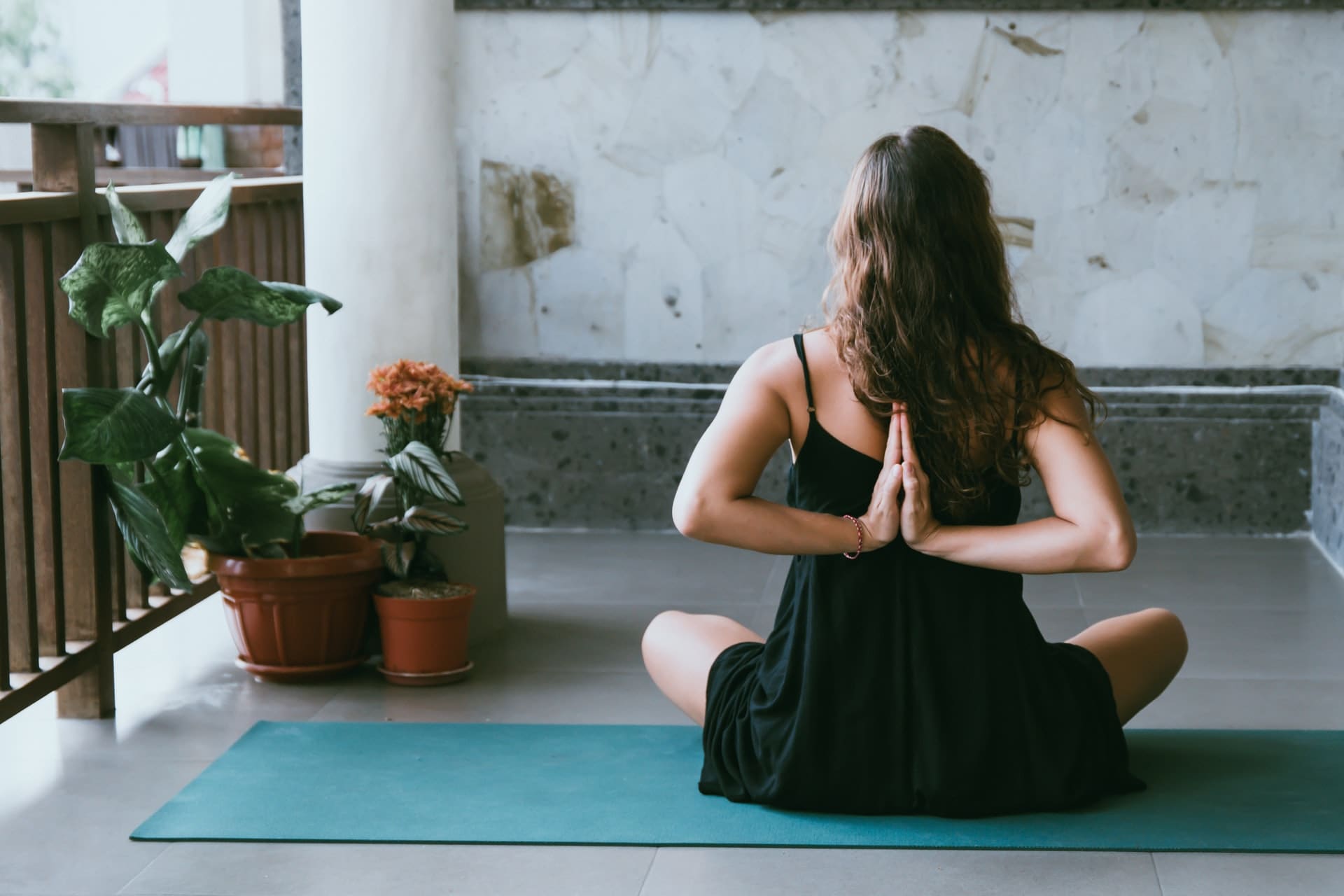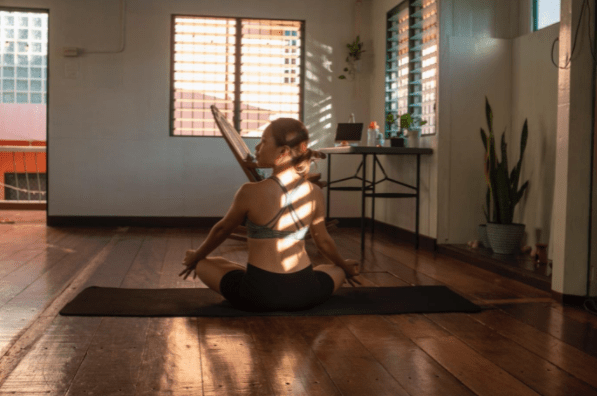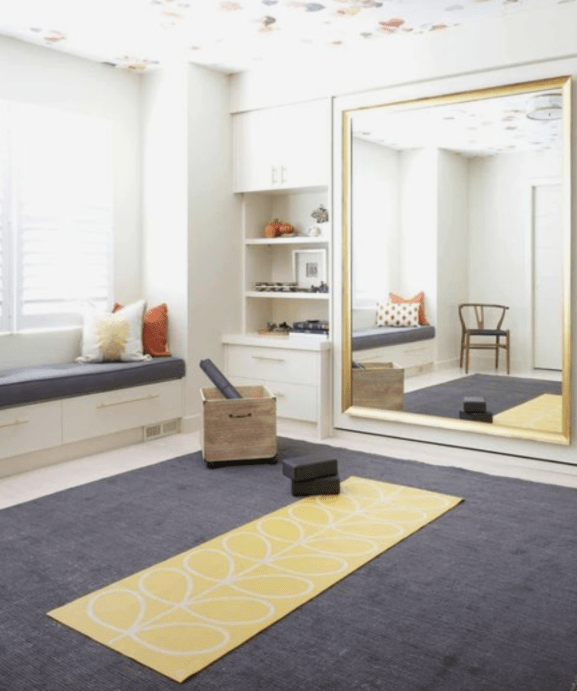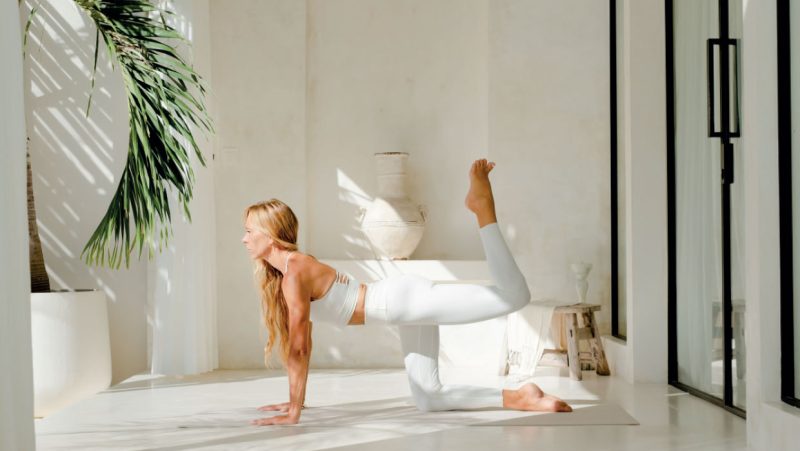
Tips to create a yoga sanctuary at home
A quick guide to creating your very own home yoga sanctuary. By Denis Francis
If you were a regular at the yoga studio before the pandemic, or if you've been seeking methods to relax following your work, at-home yoga practice is essential. Set up a dedicated area at home for a session of gentle Yin yoga or a vigorous Vinyasa flow to relax, refresh, and unwind.
What's the best part? You don't require much floor space! Follow these steps to create your yoga retreat, whether it's in your bedroom, living room, corridor, or even a storage room.
At its most basic, all you have to look for is a sliver of space to set up your yoga mat, but creating a way for a more healthful yoga refuge may be a fantastic way to clean out an empty room. Read these recommendations for incorporating the Om into your home retreat, from selecting the ideal place to adding appropriate lighting, equipment, and accessories.
Find the right spot
Your yoga area may be set up pretty much anywhere in your home; what counts is that it is peaceful, uncluttered, and spacious enough to walk around in. If privacy is a concern, a room divider or screen might be a simple solution. If you have space, such as an attic or spare bedroom. that is slowly becoming a storage area, now is the opportunity to cleanse and clear everything.
Take a moment to imagine yourself doing yoga at your sweet spot before finalising it. Although other elements can aid in building a productive atmosphere, a perfect area will instinctively seem like the appropriate place to be. Large windows give enough light, which will keep you energised and balanced. It is recommended to pick a room with big windows so that it remains fresh and ventilated.
Choose your flooring

Natural hardwood or cork flooring is commonly used in yoga studios since it provides the most stable and smooth platform for practice. Laminate flooring also serves the purpose, although it is frequently overlooked due to the material's synthetic character.
Carpet floors should be avoided since they do not give the same smooth, safe surface as concrete flooring. Finally, safety is paramount, and a lovely, firm, uncluttered floor will offer the ideal non-slip basis for your yoga mat. This is especially crucial when attempting challenging postures.
Selecting natural material equipment
Natural materials tend to deepen that earthbound connection, which can benefit your yoga practice. Indeed, you are going to need some yoga props and equipment to assist in your yoga routines. There is a plethora of options when it comes to natural material yoga props.
You can choose the best yoga blocks made from cork for that extra stability when you're practicing challenging asanas. Or, cork yoga mats are the perfect non-slipping options that will last you for years. Similarly, 100% cotton yoga bolsters are a must-have for the much-needed support in deep stretches and bends.
Choosing renewable resources not only provides the best atmosphere for your routines, but they are also environmentally friendly. If you're painting the walls, choose non-toxic paint to remove dangerous chemicals from the air, making your yoga space cleaner and safer.
Selecting the mood of your space
Lighting will help to set the tone. Natural light is ideal, but if the sun is too hot or shines straight into the room, soft sheers over the windows can improve the tone. The overall lighting design is to provide a soft, unobtrusive light. Avoid using harsh rays. Artificial fluorescent lighting is not recommended. Installing dimmer switches on the above lights is a better option.
You may use one or two floor lamps or just place a dimmer switch on the ceiling lighting to dim it. Candles can also be used to establish the mood for an ambient practice, but they must be used with caution. Lanterns can help in reducing the risk of a fire, while LED candles can offer the same effect as a natural flame in a safe manner.
Pick the right décor
Decor and accessories should be selected carefully. A few natural artifacts, candles, floor lamps with paper shades, artwork, pictures, if desired – anything to help you get in the mood. Choose posters or paintings with pleasant images to help you relax and get the most out of your yoga practice. A tiny storage area or accessory organiser will be quite handy for storing your accessories while not in use.
To finish, add some plants for a natural feel since they help clean the air and bring nature into space.
Conclusion
When creating a yoga room, one thing must be kept in mind at all times. You must keep things basic! Don't overcrowd the room with decorations and other objects. The concept is more about removing than it is about adding.
Maintain a dust-free environment and ensure that it is frequently ventilated. Even if you live in a city where fresh air is scarce, airing the room is preferable. You may consider getting an air purifier and an ionization system for the best purposes. Or, you can get a natural salt lamp. Studies prove that an ionized atmosphere through salt lamps helps you sleep better.








